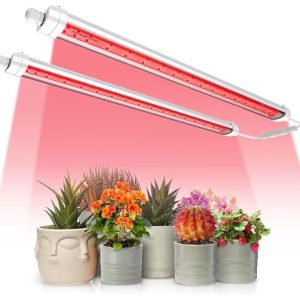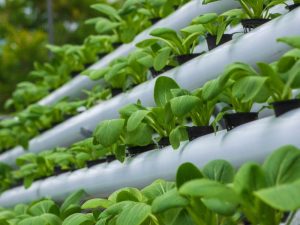Last Updated on April 3, 2024 by teamobn
Do you like mangoes? Of course, you do. Who doesn’t? Can you grow mango from seed?
Eating a perfectly ripe mango is like listening to a symphony orchestra on a balmy summer evening. Each bite delights and dazzles the tongue with a sweetness that dissolves into a flurry of unexpected notes and flavors.
The tree that produces that incomparable fruit is large and domed-shaped. In both orchards and home gardens, it should be pruned to manage its size.
In the home garden, the tree is best kept at less than five meters in height. Pruning means it will often develop a rounded crown.
The canopy is dense with lush, long, downward-pointing foliage. New leaves start bright pink then age to red before turning a deep, tropical green color.
The leaves produce a distinct mango aroma when crushed. Dwarf varieties are suitable for both gardens and large pots.
The tree grows year-round in frost-free tropical, sub-tropical, and warm temperate climates. The roots of the mango tree run deep and its network of surface roots spread wide.
Unlike the roots of other trees, however, the roots of the mango tree are not destructive. This means you can plant the tree beside the pathways of buildings. Just bear in mind that it can become a very large tree.
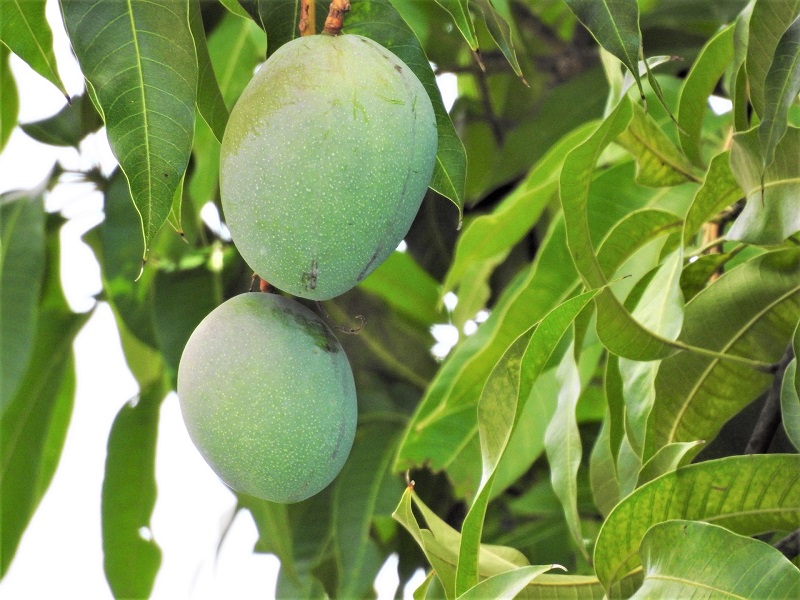
How to Grow Mango from Seed
Contents
You can grow mango from seed easily. One of our OBN writers actually started a tree by accident, throwing the seed into a discarded coffee pot filled with dirt. He eventually replanted the sapling, which is now a beautiful 20-year-old tree.
That said, the seed must come from a fully ripened fruit and it must be planted while fresh. Use a tall, deep pot or bag to allow for adequate root development.
Clean the seed to remove excess flesh. The entire seed can be planted whole. But to hasten germination when you grow mango from seed, carefully open the stone – this is the shell surrounding the kernel – and remove the kernel without damaging it.
Position the kernel in quality potting mix. Three-quarters of it should be buried into the mix with the top end protruding. The top contains the folded first leaves and the shoot. These should be obvious.
Keep the pot somewhere warm. Germination should take place in under three weeks. Plant your tree where there is good air circulation and avoid wetting the foliage.
Remember, too, that an excessive application of nitrogen fertilizer makes your tree weak and sappy. This, in turn, will make all its leaves and fruit susceptible to bugs and diseases.
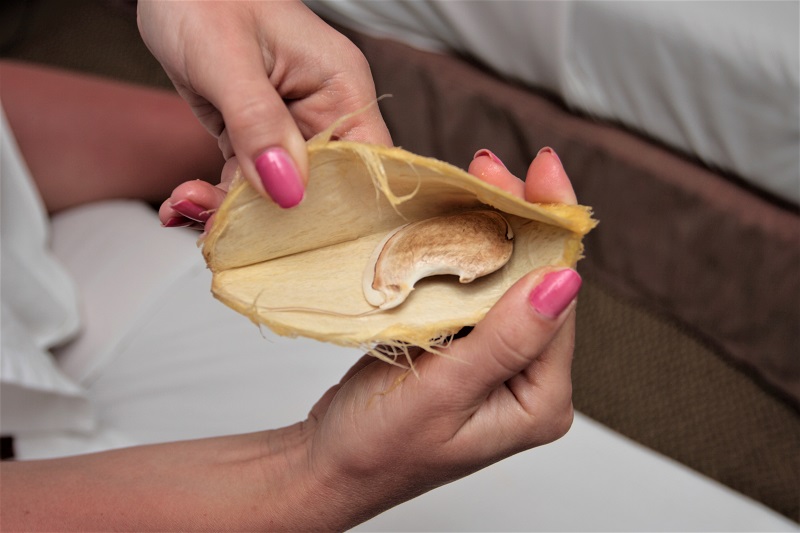
Planting Tips
The mango has a central tap-root. Be sure not to damage this during planting. The easiest way to prevent damage is to avoid excessive disturbance of the root ball at planting time.
Dig a planting hole at least twice as wide as the pot or bag, and around 20 centimeters deeper, too.
Blend through some well-composted manure or suitable planting compost and add a controlled-release fertilizer.
Young trees will likely require staking for at least the first six months. Use at least two stakes, and keep the sapling well-watered as you grow mango from seed.

Caring for Your Tree
Water your tree regularly, several times a week in dry weather as you grow mango from seed. But do not let the tree sit in soggy soil. Overwatering can kill it, especially in heavy soil. The mango tree, like many tropical fruit trees, thrives in periods of alternating wet and dry.
Prune the central shoot to encourage lateral branching as the young tree develops. You should try to have three to five lateral or scaffold branches developing.
Mangoes are easily damaged by wind. For this reason, it is best that you remove any broken branches promptly after you grow mango from seed. Tidy the damaged area to a neat cut.
As the tree bears fruit on the current season’s growth, you can improve flowering and fruiting by lightly pruning in autumn through to early summer.
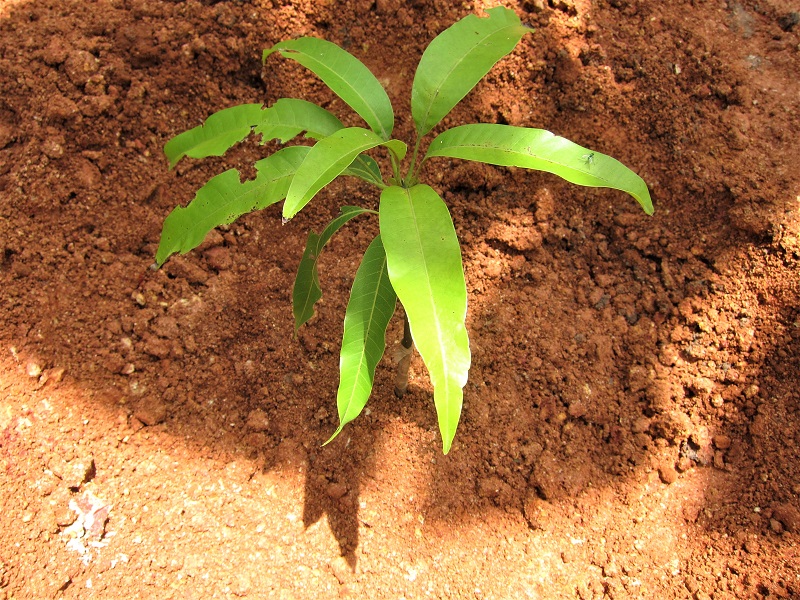
Common Problems
Mango trees often attract fruit flies. This is why you should cover each fruit with a fruit fly bag after they form as you grow mango from seed.
They are also susceptible to Anthracnose – a fungal disease that causes black spots on leaves and fruit.
Prune away affected parts, bag them, and put them in the garbage bin. This will help prevent the spread of the fungal spores when you grow mango from seed.
Some growers also complain of trees that do not bear fruit. Why this should be case for some depends on several factors.
“Temperatures below 10 degrees when flowering in the spring will reduce fruit set,” Greg Daley from Daley’s Fruit Tree Nursery tells Better Homes. “Also, wet weather during flowering can result in anthracnose infection which will cause fruit not to set.”

Bear in mind that a mango tree can live for over 300 years and still keep fruiting. So, consider your planting site carefully when considering to grow mango from seed.
Old trees can produce 1,500 fruits each season. Some growers have even reported harvesting as many as 6,000 fruits from a single tree in one season.
Feature Photo: Øyvind Holmstad
Organic Versus Chemical Fertilizers for Mango Trees
As you grow mango from seed, selecting the right kind of fertilizer is a key step you won’t want to overlook. This choice plays a critical role in nurturing the health, vigor, and eventual bounty of your tree.
Let’s go through the differences between organic and chemical fertilizers and their impacts on mango trees, especially those tender saplings sprouted from seeds.
The Organic Route for Mango Saplings
When you start the journey to grow mango from seed, reaching for organic fertilizers is like choosing a gentle, nurturing path for your young tree. These fertilizers come from natural sources—think compost, manure, or bone meal.
They’re not just about feeding your plant; they enrich the soil’s texture and fertility over time. This gradual nourishment aligns perfectly with the needs of mango trees grown from seed, encouraging a robust root system and healthier, more resilient growth.
Organic options do more than feed your mango tree. They breathe life into the soil, boosting its ecosystem as you grow mango from seed. This means better water retention and a friendly environment for roots to thrive. But it’s important to remember the nutrient levels in organic fertilizers can be a bit unpredictable. So, keep a close eye on how your mango tree from seed is doing and be ready to adjust your organic inputs as needed.
Going Chemical for Quick Results
If you’re looking to give your mango tree grown from seed a quick nutrient boost, chemical fertilizers offer a fast-track solution. They’re engineered for precision, delivering exactly what your tree needs at various growth stages. This can be particularly helpful when your mango tree is in dire need of specific nutrients to leap from seedling to a sturdy tree.
However, this rapid nutrient delivery system requires a careful hand as you grow mango from seed. Too much of a good thing can damage your young mango tree, not to mention the potential environmental fallout from runoff. Plus, unlike their organic counterparts, chemical fertilizers don’t do anything to improve the soil’s structure or organic content, which might leave your soil wanting in the long run.
Making a choice: Organic vs. Chemical for Your Seed-Grown Mango Tree
Deciding between organic and chemical fertilizers when you’re nurturing a mango tree from seed boils down to balancing immediate needs with long-term environmental consciousness.
Organic fertilizers are the slow and steady friends of your garden, promoting soil health and gradual growth. Chemical fertilizers can be the sprinters, offering a quick fix for specific deficiencies but requiring judicious use to avoid harm.
For those looking to grow mango from seed, why not blend the best of both worlds? Start with organic fertilizers to establish a solid, healthy soil foundation, then introduce chemical fertilizers sparingly as specific needs arise.
Keeping a watchful eye on your soil’s condition and your mango tree’s growth will be crucial. This way, you can tweak your approach to ensure your mango tree doesn’t just grow but thrives and flourishes, promising delicious fruits for years to come.
FAQ on How to Grow Mango From Seed
Can I really grow mango from seed?
What type of soil is best for growing mango from seed?
How often should I water my mango tree grown from seed?
What should I do if my mango tree grown from seed doesn’t bear fruit?
Conclusion
The efforts to grow mango from seed offer a rewarding experience, culminating in the joy of harvesting your delicious fruit. Through careful attention to planting, watering, and fertilizing, you can nurture a seed into a thriving mango tree. Embrace this gardening adventure, and watch as your efforts blossom into a lush, fruit-bearing testament to your green thumb.


